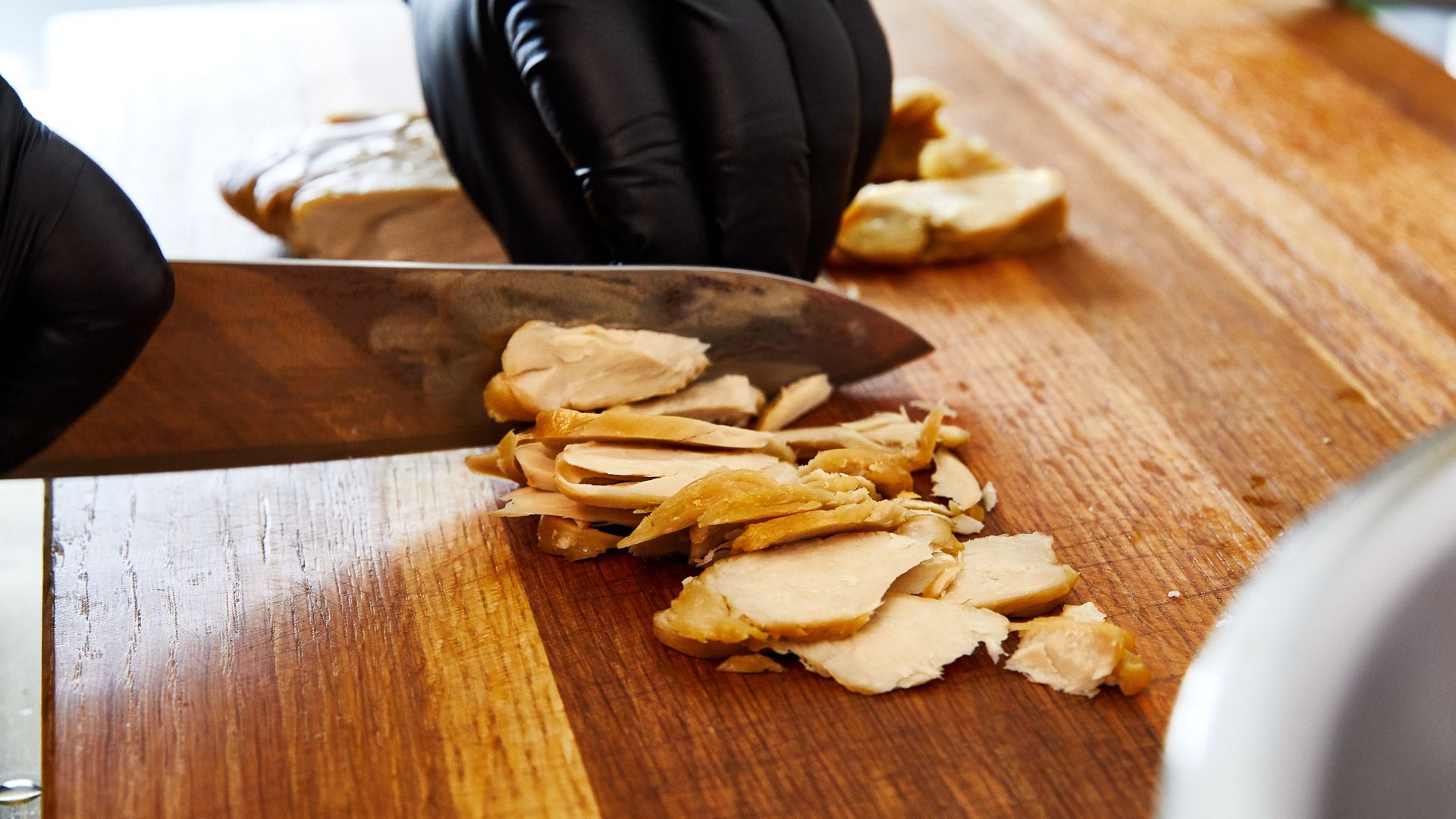1st 'lab-grown' meat approved for sale in the US
In a first, U.S. regulators have cleared several lab-grown chicken products for sale in the country.

Lab-grown meat, made from chicken cells cultured in steel tanks, can now be produced and sold in the U.S. for the first time.
On Wednesday (June 21), two California-based companies — Upside Foods and Good Meat, a subsidiary of Eat Just — became the first in the nation to get approval from the U.S. Department of Agriculture (USDA) to produce and sell lab-grown chicken products, The Washington Post reported. Joinn Biologics, a manufacturing partner of Good Meat, also received approval to cultivate the meat.
The process of making lab-grown meat, also called "cultured" or "cultivated" meat, begins with sampling cells from the tissues of a living animal, according to the USDA. Collecting the cells "typically does not permanently harm or kill the animal," the department notes. The cells are then screened and stored in a cell bank. Cells are later collected from the bank and moved to large, enclosed vessels — often steel tanks, according to The Associated Press.
The tanks act as bioreactors where the cells can rapidly multiply. Manufacturers supply the cells nutrients, surfaces for the cells to grow upon, and protein growth factors that cue the cells to differentiate into muscle, fat and connective tissues like those found in a regular chicken, the USDA statement explains. Once differentiated and ready for harvest, the cells are collected from the tanks and "prepared using conventional food processing and packaging methods."
Related: Do you need to eat meat to get protein?

In 2019, the U.S. Food and Drug Administration and the USDA's Food Safety and Inspection Service established a regulatory framework to ensure that lab-grown meat is safe and truthfully labeled. As part of this approval process, both Upside Foods' and Good Meat's cultivated chicken products have been assessed and confirmed to be safe for human consumption. On Wednesday, both companies received a "grant of inspection," the final USDA seal of approval needed to bring their products to market, NPR reported.
For now, the lab-grown chicken won't be found in any average grocery store, and it will be pricey. Upside Foods is partnering with Dominique Crenn, owner of the three-Michelin-starred restaurant Atelier Crenn, who will serve the cultivated meat at Bar Crenn in San Francisco. Similarly, Good Meat's product will be served in a yet-undisclosed restaurant of celebrity chef José Andrés, one of the company's board members, according to NPR.
Get the world’s most fascinating discoveries delivered straight to your inbox.
Following this initial rollout in fancy restaurants, Dr. Uma Valeti, Upside founder and CEO, told Yahoo Finance that the company aspires to eventually "beat the conventional prices" of traditionally raised meat and foresees that Upside's products will be "at parity" with conventional meat products within five to 15 years.
In addition to the fact that cultivated meats are "slaughter-free," proponents of the products tout their potential environmental benefits, compared with conventionally raised meat. However, some scientists, including a team at the University of California, Davis, have pointed out that cultivated meat doesn't necessarily produce fewer carbon emissions than conventional livestock farming, in part due to the energy-intensive process currently required to make the growth medium used during production.
On top of this, it's not yet clear how companies can feasibly scale up production to make lab-grown meat available for general consumption, CNBC reported.

Nicoletta Lanese is the health channel editor at Live Science and was previously a news editor and staff writer at the site. She holds a graduate certificate in science communication from UC Santa Cruz and degrees in neuroscience and dance from the University of Florida. Her work has appeared in The Scientist, Science News, the Mercury News, Mongabay and Stanford Medicine Magazine, among other outlets. Based in NYC, she also remains heavily involved in dance and performs in local choreographers' work.
 Live Science Plus
Live Science Plus





